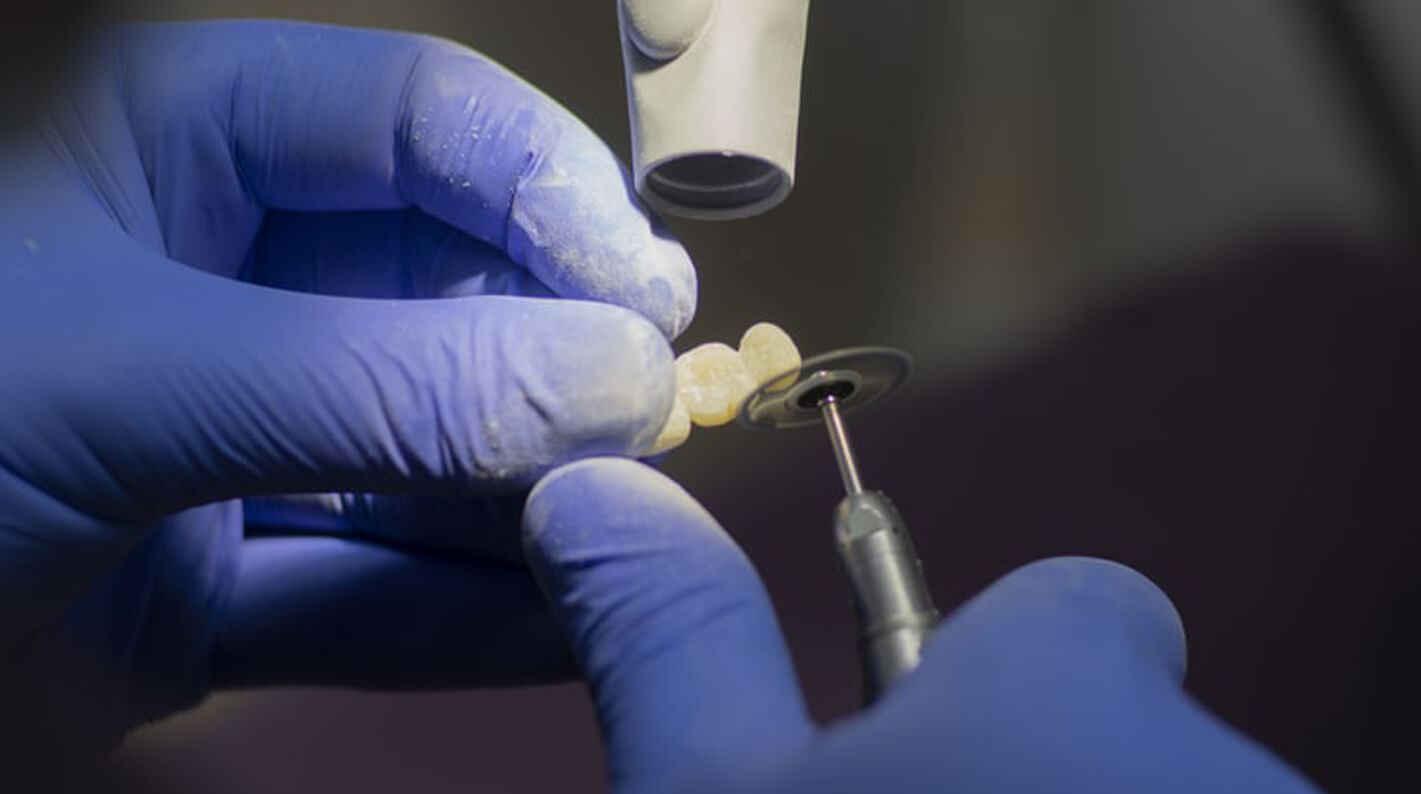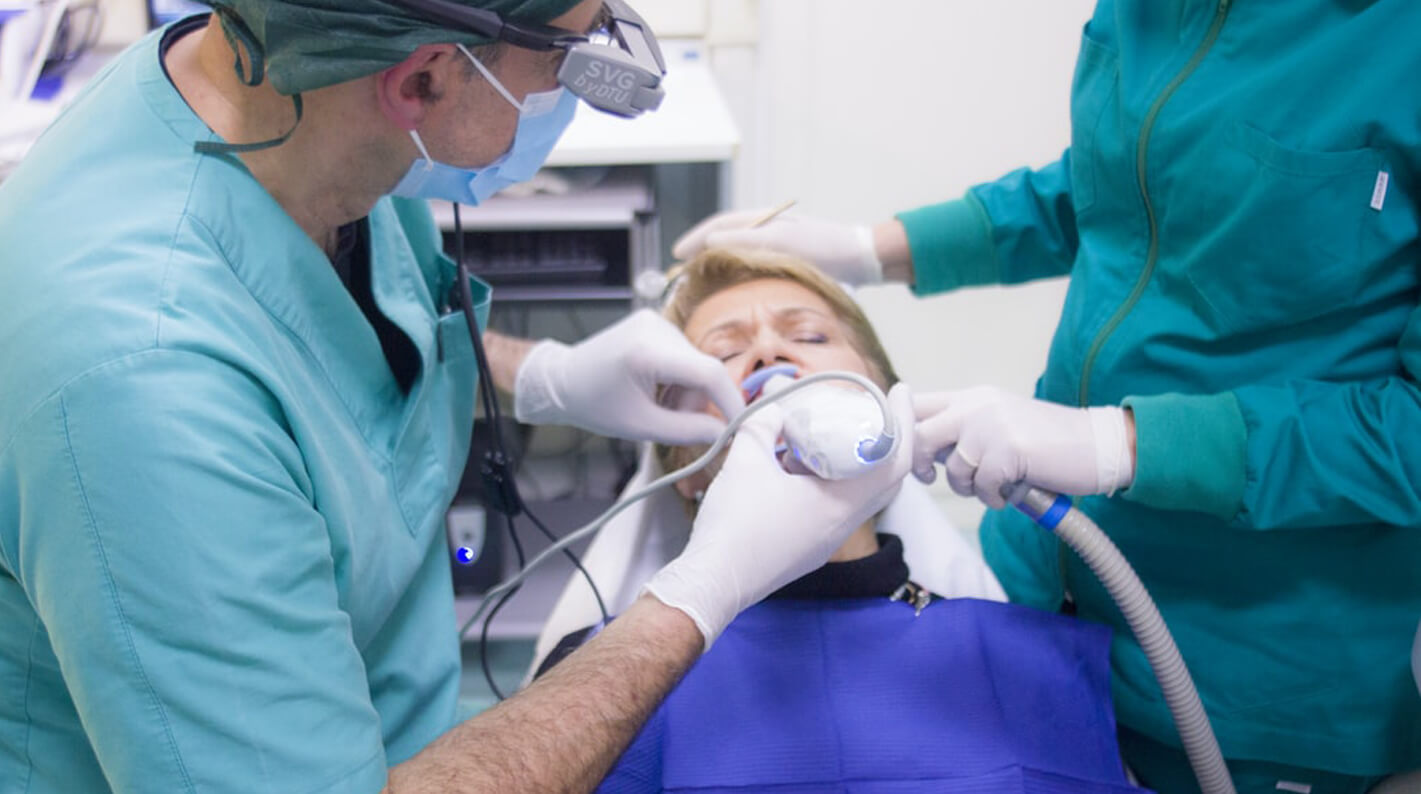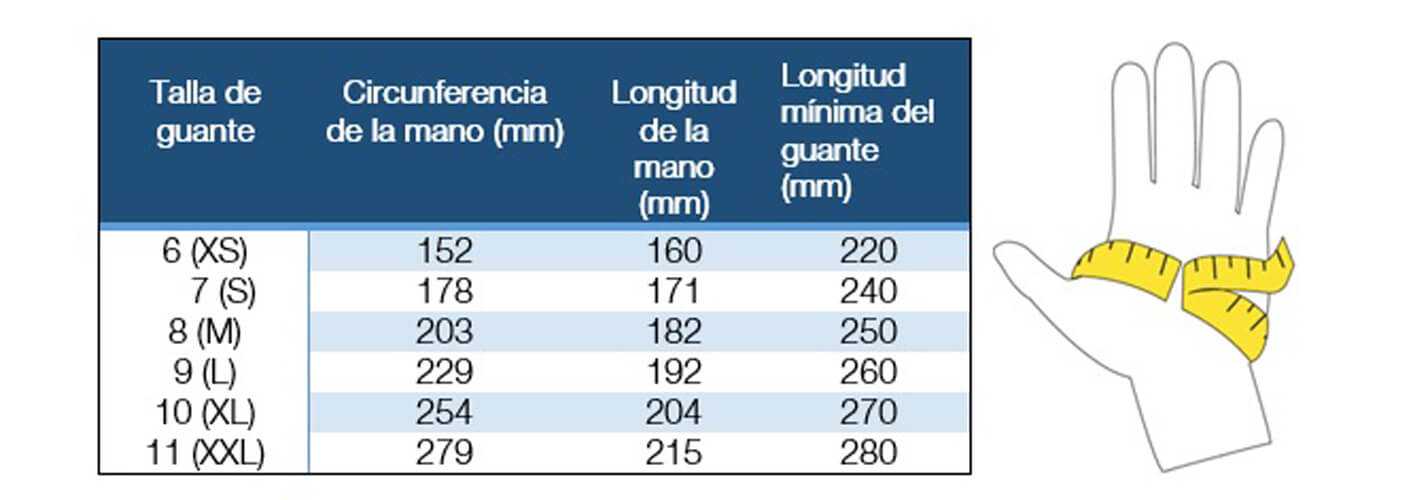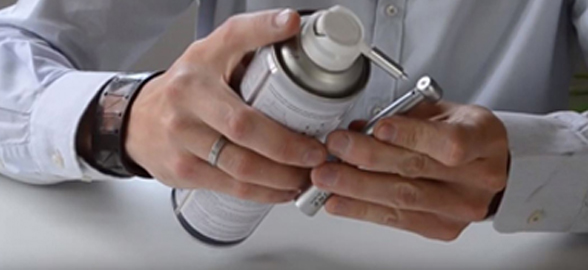Gloves have become an essential instrument of protection in dental clinics against any type of contamination. They reduce the risk of transmitting microorganisms to patients and therefore prevent the transmission of infections. They are necessary when cleaning or disinfecting dental instruments, surfaces or when treating patients. Therefore, the most commonly used in the dental sector are disposable gloves, which are ideal in case of contact with blood or body fluids such as saliva.
These can be powdered or powder-free. The powdered gloves are characterised by being easy to put on. Powder free gloves undergo an intensive washing process and have a synthetic polymer coating. Thus, they have similar characteristics to powdered gloves.
There are different types of sanitary gloves (latex, vinyl, nitrile...) with different characteristics and, sometimes, it is difficult not only to choose the type of glove but also which size best suits your hands. For this reason, today we bring you a post where we tell you in detail the characteristics of each type of glove, their differences and we reveal some tips to keep in mind so you don't make a mistake in your choice. Let's get started!

Type of gloves according to their material and use in the dental practice
- Latex gloves: disposable gloves that offer good resistance and are effective against infectious agents. They are designed with natural rubber, a very elastic and adaptable material, making them adjustable and comfortable gloves. They can be sterile or non-sterile, powdered or powder-free.
- Vinyl gloves: for short-term treatments, without risk of exposure to external factors. They are made from synthetic polyvinyl chloride resins and are latex and chemical accelerator free gloves. They offer good barrier protection and are resistant to many contaminants. They are non-sterile and can be powdered or powder-free.
- Nitrile gloves: highly resistant to tears, punctures and chemicals. They are made of synthetic polymers (100% synthetic nitrile) and their microrough surface provides high comfort and sense of touch. They are ideal for tasks with high biological or chemical risk. They can be sterile or non-sterile, powdered or powder-free.
- Polyisoprene gloves: they serve as a second skin and help to perform correctly the functions inside the clinic.
They can also be classified into sterile and non-sterile.The former are suitable for performing any type of dental surgery and thus protect both the patient and the dentist from possible chemical and/or biological risks. They can be surgical gloves, nitrile or powder-free latex gloves. The latter are for daily and regular use, as one of the first measures of protection and care.

Tips for Choosing Your Gloves in the Dental Clinic
Now that we know the most commonly used types of gloves in Dentistry, let's discover the differences between them and other factors to consider when making your choice. Keep reading because we'll tell you everything you need to know!
Differences between the Main Types of Gloves: Latex, Vinyl, and Nitrile
As we mentioned earlier, there are numerous types of disposable gloves: nitrile, latex, vinyl, polyethylene, PVC... The most commonly used in Dentistry are latex, vinyl, or nitrile. Therefore, it's essential to know the significant differences between the three types to ensure you make the right choice.
Latex is the most well-known and widely used material for gloves. It offers the broadest protection against chemicals and bodily fluids. It's more resistant and has a greater adaptability than vinyl gloves. They're also the most economical of all. Additionally, latex is the most elastic and, therefore, provides the most comfort.
Vinyl gloves offer greater permeability, less resistance, and less adaptability to the hand compared to their competitors. They're more economical than nitrile gloves but also less durable than latex and nitrile gloves. Moreover, vinyl doesn't fit as snugly to the hand, which hinders the professional's dexterity and increases the likelihood of the glove getting caught or torn.
Finally, nitrile gloves are characterized by their broad resistance to biological agents and chemicals. In fact, they're three times more resistant to punctures than latex. The only drawback is that once the glove is punctured, it tears completely. This might seem like a disadvantage, but it serves as an indicator to replace them and keep your hands protected.
How to choose the right glove size in dentistry
One of the most important factors when choosing gloves is selecting the right size so that the glove fits your hand perfectly and you can work safely and comfortably. But why is it so important to get the right size? Because it can affect your work performance. A smaller size can make you feel fatigued and break more easily. On the other hand, a larger glove can cause a loss of feel and sensitivity.
Today there is a wide range of glove sizes rangingfrom XS to XXL. One of the most common ways to find out your size is to measure the contour of your hand or the length of your hand. To do this, you have to pass a flexible tape measure around the widest point of your hand (from the knuckles) and, depending on the measurement, you can see in the following table what your ideal size is.

Source: Ministry of Labor and Social Affairs and the Instituto Nacional de Seguridad e Higiene en el Trabajo.
EXTRA TIP: if you are between two sizes, it is recommended to always choose the smaller one.
Another way to choose your glove size is by measuring the length of your hand. Once you have done this, locate your size below:
.
- Size S: 19 cm.
- Size M: 20 cm.
- Size L: 21.5 cm.
- Size XL: 23 cm.
- Size 3XL: 25 cm.
The problem of allergies and solutions
The main problem with gloves is the allergies they can cause, especially latex gloves. These are made of a natural material, rubber, which can cause allergic reactions in some people. On the other hand, powdered gloves, made of corn starch, can also cause irritation or allergies.
What do I do if I am allergic to latex and/or powdered gloves?
The vinyl gloves are your best option. As they are designed without latex or chemical accelerators, they are ideal for avoiding allergy problems. If you are allergic to powdered gloves, select powder-free gloves to avoid redness or rashes.
Where to dispose of gloves?
The period of use of the gloves is limited to a few hours. After their optimal time of use, they lose their effectiveness and need to be disposed of as waste. Nowadays, due to the huge amount of gloves used every day, it is more important than ever to dispose of them in the correct container, i.e. the waste bin or residue bin. This is where all waste that is not collected separately is deposited.
 Source: Official website Community of Madrid
Source: Official website Community of Madrid
We bring you a selection of the best rated gloves by our customers:
VIDEO: How to use non-sterile gloves safely.
Finally, we leave you with a video that will explain how to use your gloves safely. Press PLAY!
As we have seen, the choice of the right gloves should be made according to the applications for which the glove is to be used, the possibility of allergies caused by some types and the size that best suits your hand. In this way, you will not only avoid breakages, but you will also work more comfortably and safely.
This is the end of today's post. If you still have any questions about gloves, don't hesitate to write to us. We'll be happy to answer any questions you may have! And to keep up to date with the latest in the dental sector, follow us on our social networks.
See you next time!





